OUR WORKS
- Price $100,000.00 - $199,999.99 Remove This Item
-
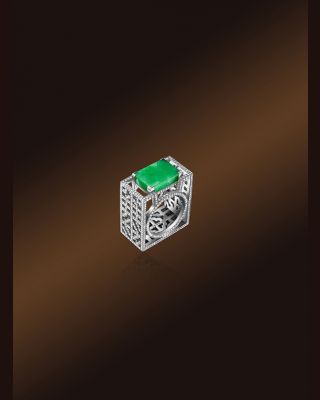 CHINESE LATTICEread more
CHINESE LATTICEread moreMany windows of traditional Chinese architectures are generously ornamented. Mostly constructed of hand-carved wood, Chinese lattice design is characterized by cultural symbols and repetitive use of geometric patterns.
-
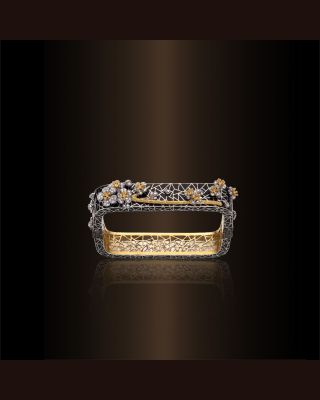 Enamelread more
Enamelread moreThe Qing dynasty Emperor Kangxi (1662-1722), a great lover of the arts, admired the new glass compound enamel colours coming from Eu- rope. These new colours were known as ‘Western colours’ in the Qing court and to master their techniques, Emperor Kangxi set up an enamel workshop in 1700 overseen by the Imperial workshop in Beijing and the former Limo- ges enameller and Jesuit Jean-Baptiste Gravereau (Chen Zhongxin), who was to play such a decisive role in achieving Kangxi’s goal.
-
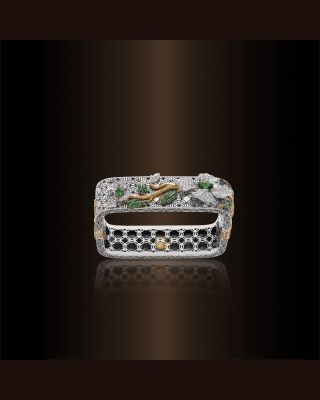 FLORAL BROCADEread more
FLORAL BROCADEread moreYEWN pays tribute to the beautiful Jinwen 錦紋 patterns used in Qing Dynasty 清朝 imperial porcelain, lacquerware and many other works of art. Qing Emperors embraced the dominating Han 漢 culture heritage and brought the Han Chinese aesthetic sophistication into a new height. By incorporating the sacred and auspicious flowers on top of the brocade pattern, the collection reinterprets the poetic past with YEWN’s world renowned, iconic square ring with superlative craftsmanship.
-
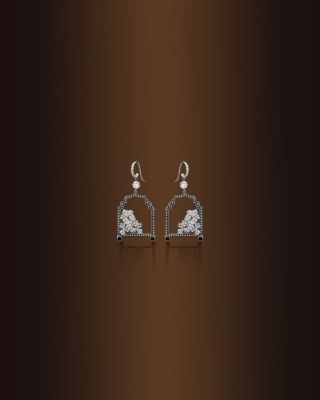 FLORAL CAGEread more
FLORAL CAGEread moreChina has an established history of breeding birds for display. The ornamental birds have been kept in cages since the Tang Dynasty (618-907 AD). During the Ming (1368–1644 AD) and Qing (1644-1912 AD) dynasties, many families were fond of pet birds which became a recreation in their daily lives. A gorgeous handcrafted birdcage symbolized one’s social status and power from that time. As homage to the centuries-long craftsmanship of birdcage making, YEWN revitalized the fast-disappearing decorative art of Chinese birdcages by bringing them into the world of jewellery design.
-
 FLORAL FANread more
FLORAL FANread moreChinese Fans are made in many different styles and form an excellent medium to illustrate the artistic spirit of Chinese design. Dating back to the Shang (1600-1046 BC) Dynasty, a fan made of pheasants' feathers was the first to be recorded in China. Round fans, made of silk, paper and feathers, were first seen in China and remained the main shape of fans until the Tang and Song dynasties.
It was a symbol of social status and also of taste in fashion. Fans are used in decorative art: papers for fans are printed, mounted and framed like pictures. Many of the artists of the Song (960-1276 AD) and later dynasties were fond of painting miniature landscapes and floral studies on one surface while drawing fancy calligraphy on the other.
YEWN’s latest Floral Fan Collection is dedicated to this distinguished artistic creation. Framed in 18k black gold, brilliant cut diamonds and rose cut diamonds add to its shimmer.
-
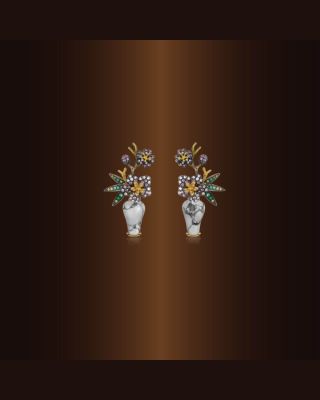 FLOWER FAIRIESread more
FLOWER FAIRIESread moreThe stories of “Flower fairies” come from the Tang Dynasty (618-907). Rumor has it that the 12th of February in the Chinese calendar, is the birthday of all flowers and every year on this particular day, people worship the flower fairies with liquor, bouquets and hire troupes to perform the different stories that come with each individual flower fairy. In accordance with ancient tradition, people celebrate the flower fairies’ birthdays in order to wish for prosperity, wealth and good fortune.
Flower enthusiasts, lovers and literati of all dynasties wrote spectacular poems and moving legends for the various kinds of flowers, and hence created a flower fairy for all 12 months of the year. One of these poems explains that although flower fairies all have different personalities, they all share the common goal of protecting mother earth. According to the Chinese calendar, January is represented by Plum and Bamboo which symbolizes endurance and integrity; April is Peony and Orchid which symbolizes prosperity and elegance; June is the Lotus which signifies purity; November has Narcissus and Camellia which embodies an auspicious life and pureness, and so on.
-
 FRAGRANCE LOCKETread more
FRAGRANCE LOCKETread moreTraditional Chinese fragrance bags were made from cloth or woven with multicoloured silk strings at the top with knots of auspicious meaning hanging from below. These knots were stuffed with aromatic herbs, which filled the air with a sweet fragrance and repelled insects and evil spirits. They came in a myriad of shapes from round and square, to the shapes of gourd, pomegranate, peach and many others fruits decorated with elaborate patterns symbolizing an auspicious meaning.
-
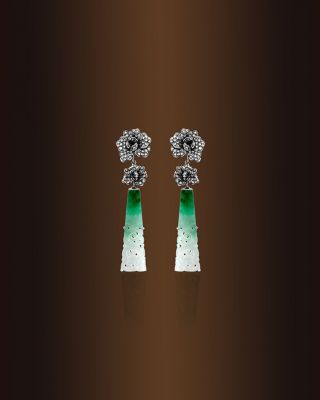 GLORIOUS PEONYread more
GLORIOUS PEONYread moreThe peony, the flower of wealth and honor, is the symbol of prosperity in Chinese culture. The peony’s large petals and showy color make it “The King of Flowers”.
-
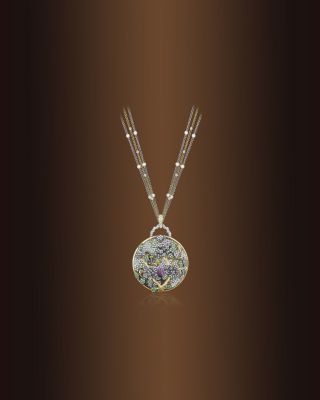 GONG BIread more
GONG BIread moreYEWN’s Gongbi Collection pays tribute to Chinese painting artists of this meticulous art form with YEWN’s trademark craftsmanship. Coloured and usually depicts figural or narrative subjects, GongBi uses highly detailed brushstrokes that delimit details very precisely and without expressive variation. These paintings were endorsed and collected by royalty and the elite of China in secret in royal palaces and private homes between the Tang and Song (960-1276 AD) Dynasties.